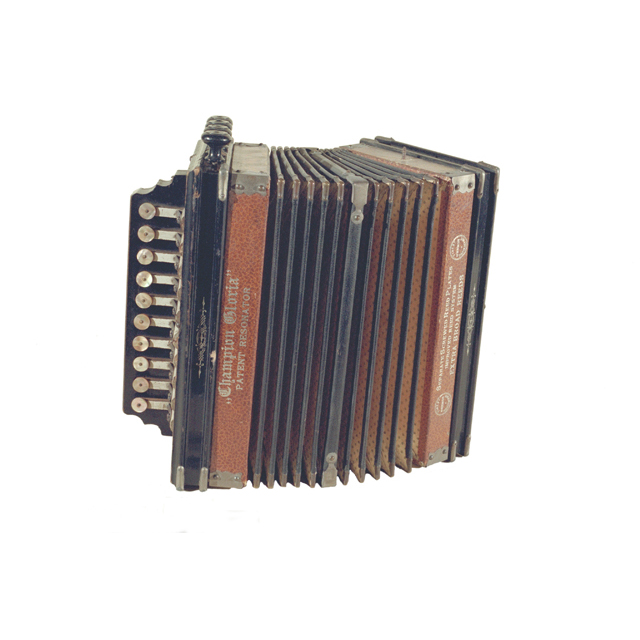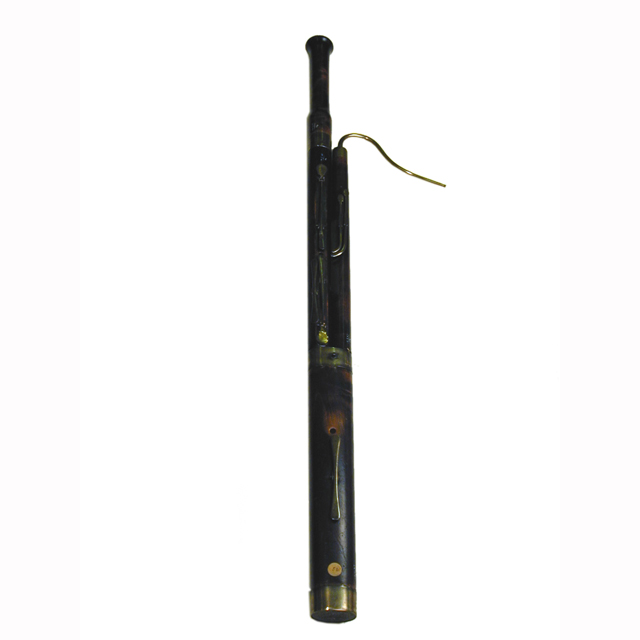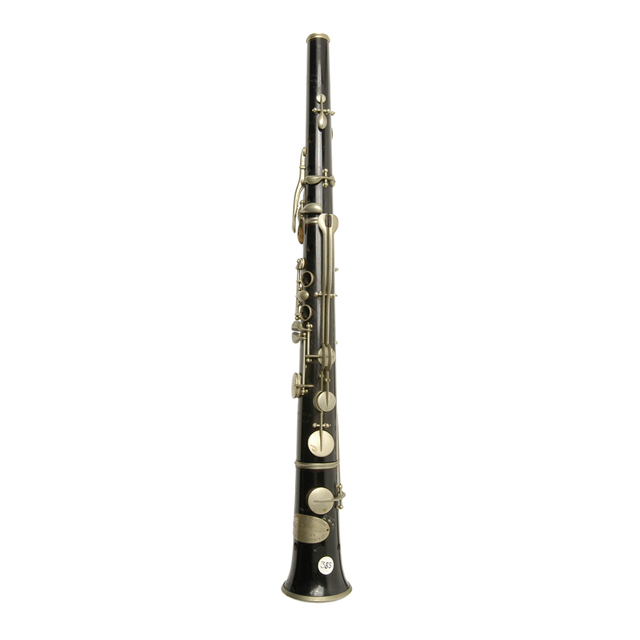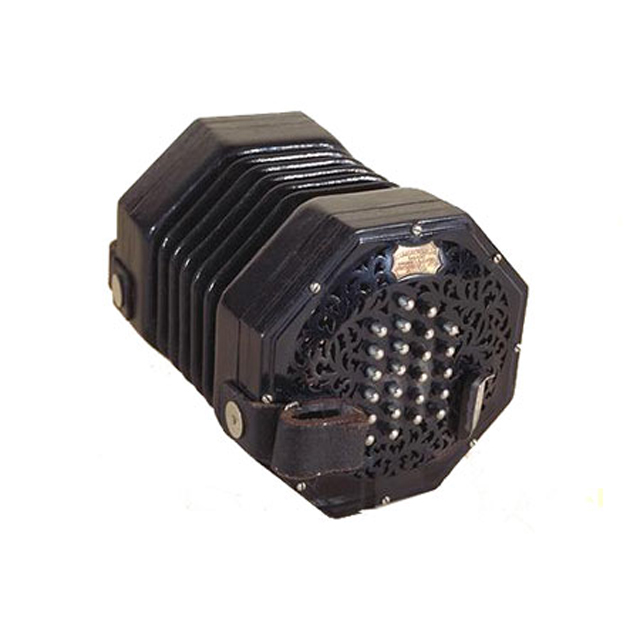
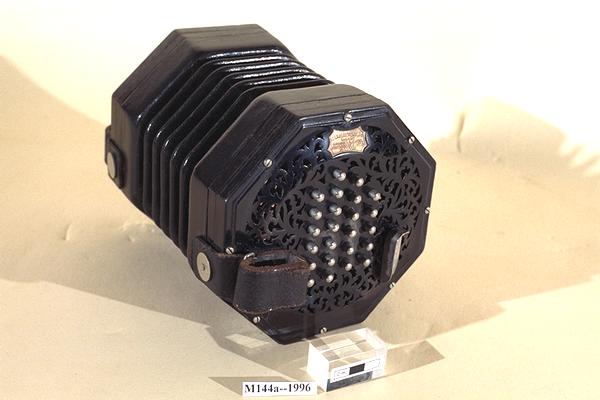
English system concertina, piccolo aeola. Serial number 25331. Scalloped label inset brass panel: 'C. Wheatstone & Co. Inventors, Patentees & Manufacturers, Concertinas and Aeolas, London.' Five and a half inches raised ebony ends, bevelled edge, complex fretwork and sides. Forty eight domed chromed keys, bushed. Black leather straps, with two chrome screws, one damaged. Five-fold black leather bellows. Round-end steel reeds. Square leather case, with gold/black Wheatstone West Street label in lid.
Popular as both a solo and an ensemble instrument, the concertina was built in a range of sizes for use in concertina bands - most common were treble register instruments but bass, baritone and more rarely piccolo versions such as this one were also available. A piccolo instrument is pitched one octave above the treble version. Concertina bands regularly played in competitions, especially in the North of England, from the 1860s until the Second World War.




